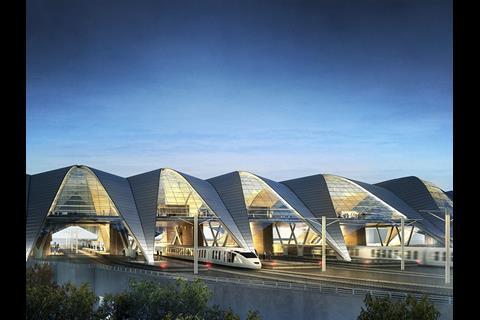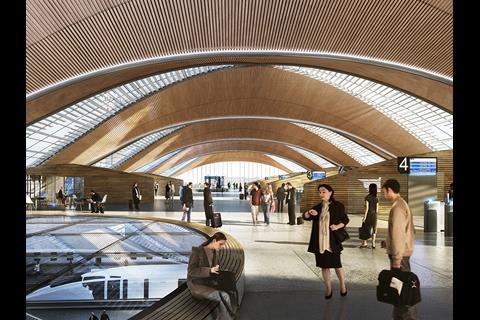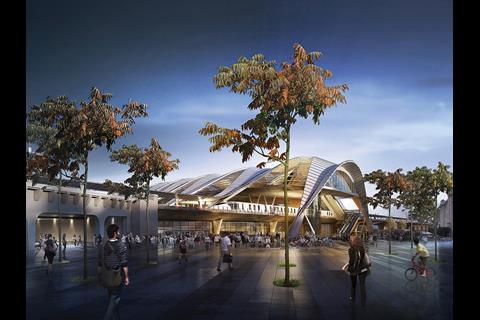LATVIA: Danish architectural firm PLH and engineering partner Cowi have won an international competition to design the rebuilding of Riga’s Centrālā station into multimodal transport hub and the provision of a bridge over the River Daugava as part of the Rail Baltica project.
Procurement for the station project is scheduled to begin in early 2018, with construction expected to be underway by 2022.
PLH said it had put forward a landmark structure with a strong visual identity within the cityscape. Canopies resembling arched fern leaves would ‘aspire to the qualities of the art nouveau period’, creating a concourse with ‘generous space, reminiscent of ecclesiastical architecture’ and providing ‘moments of great wonder’ to offer ‘a memorable experience and a recognisable point of arrival and departure.’
A major element of the project is the removal of an embankment between the river to the station, to re-establish a link between the market square and urban spaces.
The railway bridge is designed to appear light and floating, and features an integrated bicycle and pedestrian path.
‘Our proposal delivers a coherent, smooth and living infrastructure hub that connects the city and strengthens the existing identity of Riga’, said Steen Enrico Andersen, PLH Partner and lead architect for the proposal. ‘The green rampart, the water, the historic city and the market are all elements that contribute to the strong identity of Riga. By taking on a holistic approach to traffic and urban space development we have removed barriers and prioritised public transport, pedestrians and cyclist to create a more liveable and sustainable city.’
Baiba Rubesa, Chair of trinational Rail Baltica project promoter RB Rail, congratulated PLH and Cowi on behalf of the three Baltic States. ‘The station project is unique in terms of technology, funding and the broad number of stakeholders’, she said. ‘It is located in the very heart of Riga, bringing many people together every day, and it is the section with the highest complexity in all three Baltic States.’





















